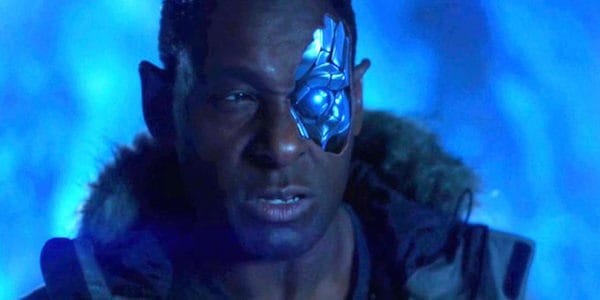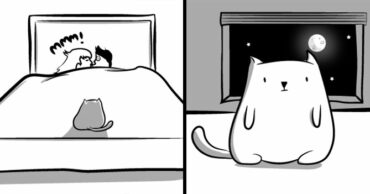
“He’s borning, [villain Cyborg Superman is]” Supergirl series regular, the UK’s David Harewood recently gave a truly candid answer to young fan at an Australian fan convention at Perth. But why is Cyborg Superman borning? Why didn’t the writers give Cyborg Superman more character development? There’s plenty to draw from in the source material (Astronaut whom Superman didn’t quite save on a spaceflight). And plenty to be developed in the television version (USA’s chief alien hunter displaced as head of his own agency, by alien he sought). So, why didn’t the writers of Supergirl give Mr Harewood more to work with in their development of Cyborg Superman as a character? They gave rather rich character development to General Astra and Maxwell Lord in Season 1 and to Lillian and Lena Luthor in season 2. This reporter submits that the 43 minute format of primetime dramas is the culprit.
There’s only so many minutes of story to be put on the air during a primetime broadcast or cablecast hour. In the US, government regulations cap advertising at about 18 minutes per primetime hour. Depending on how much advertisers a willing to pay, this leads to about 16 to 18 minutes of advertising in each broadcast hour. In turn this leaves television creators with 42 to 44 minutes of story to fill out. With procedurals (like the NCIS shows) and procedural variants (like Castle, Lucifer and Rosewood) this gives plenty of time for the show’s creators and casts to develop the protagonists and their supporting cast. Who cares about the killer of the week? Sometimes the villain is interesting. Sometimes not. Often not. In a procedural or a procedural variant, the villains don’t matter as much, unless there’s some kind of an overarching villain pulling strings or running a conspiracy in the background (like Mum/Charlotte/the Godess in Lucifer).
Fox broadcast network has occasionally tweaked this 18 minute rule in the favor of the characters and creators with one sponsor picking up a huge portion of the cost and product placement. Fox shows like 24 and Fringe used these strategies to get more screen time for their stories and characters. 24 used the special sponsor strategy to get 51 minutes of story on the air for season premiers. Fringe used product placement of Ford vehicles to get 51 minutes of story for most of season 1.
Generally the rule is 42 to 44 minutes of show for primetime. When cable stations run your favorite shows in reruns or marathons during morning or afternoon hours, there may be even more advertising, and thus less time for story. Many shows have adapted to this time constraint by having a much shorter opening and closing credits run than 50 minute shows did in the late 1960s and early 1970s. Just look at an old episode of Star Trek or The Six Million Dollar Man. The opening credits of Star Trek were like a movie’s credits: they just kept throwing names on the blank screen set to music and intercut with the whooshing starship ‘Enterprise’ for about two minutes. The opening credits of The Six Million Dollar Man look like a sci-fi short film and kind of retell the origin story for new viewers each week. Opening credits on shows like Lucifer and Castle put up a title card for about ten seconds and then run the credits under the video for most of the second act of the show.
But even the short credits strategy won’t work entirely for ensemble cast shows like Supergirl and The Flash. The hero needs her (or his) story minutes. The supporting cast need theirs. And that only leaves room to really develop one villain per side of the season. In The Flash Season 3, the writers gave us Doctor Alchemy up front and Savitar in the back side. In Supergirl Season 2, fans got Lillian Luthor up front and Queen Rhea in the back, with extended development also given to Lena Luthor. But with only 43-ish minutes of screen time, lesser villains like Mirror Master and Top in The Flash or Red Tornado, Cyborg Superman and Metallo in Supergirl get shortchanged. I don’t think it’s the fault of the writers. The writers’ rooms on The Flash and Supergirl have shown they can develop secondary villains like Captain Cold and Heat Wave in The Flash Season 2 or Reactron and Maxwell Lord in Supergirl Season 2. They’re capable. This writer submits that they just don’t have enough screen time to apportion for developing more than one or two villains.
Perhaps the product placement and special sponsor strategy could work. Maybe Jitters coffee house in the Flash could be replaced with Starbucks. Maybe Sony monitors or Apple iPhones could be product placement advertisments in Supergirl. Maybe someone like Micorsoft or Shell Oil would be a special sponsor? But how would the audience respond to those companies? Or what would happen to the show if it’s Exxon as the special sponsor and they have another incident like the Valdeze oilspill in 1988? Or perhaps we’re just left with the model we have of a little bit of entertainment sandwiched between attempts to sell something. And that model just doesn’t seem to leave room to fully develop villains. Or perhaps this is why commercial-free/ subscription premium television channels like HBO and streaming channels like Netflix and Amazon will be the future of television. We’ll just have to tune in to find out.
 Follow Us
Follow Us





